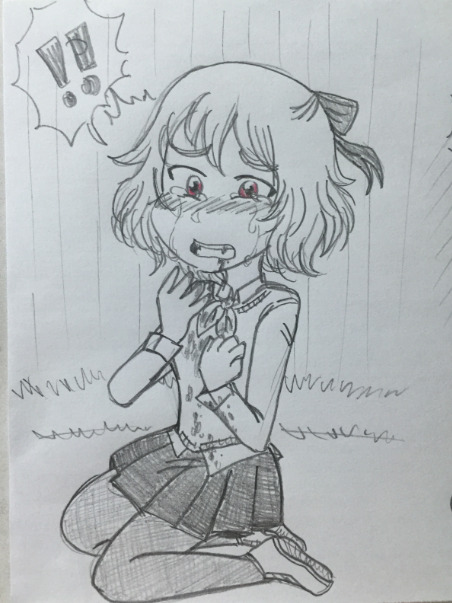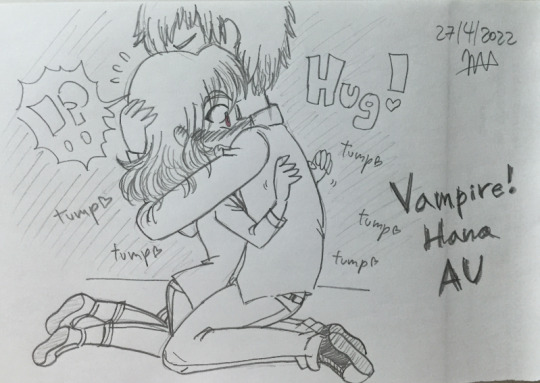#slyled
Explore tagged Tumblr posts
Text


favorite old art
20 notes
·
View notes
Text
I feel like 90% of Made in Abyss fandom misunderstand at least two characters of Riko's gang
#made in abyss#riko#nanachi#reg#prushka#faputa#if I will see another one “Reg's harem” or “Riko is boring and useless” takes im gonna murder people in faputa's slyle#my post#hot take sorry not sorry
6 notes
·
View notes
Text
@an-angel-so-called-satan made a post about how and why she feels about VADD lately and I 100% stand whit the feeling, but with different reasons.
There's the same push as in 'the villainess is a marionette' for making almost every panel a very detailed work of art and it comes with a price. Personally I don't find the story dragging, instead the artwork stopped being diverse so it's just not registering if that makes sense.



Exhibit A




Exhibit B
where the last panel should take your breath away, but it's just a little light in the background
The more simple art slyle that where present in the first two seasons gave SOUL the possibility to play with the characters more. There where more faces, angles and interactions. It was about how to draw the story. Now that time seems to be spent on drawing details and copy-pasting is just necessary to make it before the deadline.
I understand that more high quality panels means there are more merch that can be made, but the difference in the maze chapters and the birthday one (for example) is astounding if you pay attention. SOUL is not only a good artist, but an amazing storyteller and we have been robbed of it in the past seasons.
#honestly it looks like an otome game#which would be cool if it was the idea for the manhwa from the beginning#also with a simple art the core moments shone#now everything is monotone and basically a drawn tautology#villains are destined to die#death is the only ending for a villainess#death is the only ending for the villainess#vadd
57 notes
·
View notes
Text

Sobody help me...//Alguém me ajude...
#Huntric #lumity #Kevamie #nii
#slyle #Shipps
5 notes
·
View notes
Text



Suprise the silent emo crow has a rather flamboyant breathing slyle!! Also a pyromaniac.
4 notes
·
View notes
Note
Hi there! Could you try making this hair lower poly, please? https://entropy-sims.tumblr.com/post/697155927512612864/nightcrawlers-escape-slyle-a-4to2-for
added to the list. mesmer is done btw! i plan to upload it at some point today
0 notes
Text
My experience with Asagao Academy
As you may have guessed (or not), I like videogames. Since I was I kid, I used to play those pre-programmed one that eeeevery computer known to man has (you know, like solitaire and such) and maybe try the occasional random one that there is on it because your brother installed it (because you share the pc, obviously) ooor because your parents installed it for you. Anyway, though I didn't have much *variety* when I was younger, I've always liked videogames. My favorite type of games are visual novels and though I have played a decent amount of them, I'm always looking for new ones. And so, there I was, looking around in itchio for any good titles and then, I stumbled upon this game.
I sometimes had seen it while scrolling and I remember thinking the title was weird, but since I was pretty bored that day I finally decided to look at the page. The art-slyle was...pretty good, though I was taken aback when I got to see the routes of the game. They looked, well...weird to me 😅 Aaand I understood why once I read the summary: the routes were (based on) a group of youtubers named Normal Boots, which....I didn't know even existed in the first place ((O__o)) Due to that and my opinion about the character sprites, I laughed a bit and then continued searching.
Some looooong months and then, one day, I found myself EXTREMELY bored. Nothin remotely interesting to play was insight, so I just said *Meh, why not?* and decided to finally play: Asagao Academy -Normal Boots Club-. And I have to say that...I liked it more than I was expecting 😀
It is not something sooo out of the ordinary, but the different routes and characters are pretty enjoyable and funny. The game has maaany anime and videogames references (which I wasn't expecting) that make even the more random scenes somethin that can make you laugh. As I mentioned before, I didn't know about the youtubers who *inspired* these characters, so I had the opportunity to see and enjoy them as what they are portrayed here: just characters.

My very first route and absolute favorite one was PBG. What can I say? I'm a sucker for the childhood friend trope!! 🥰 Funny enough, I just chose him because I liked his *design* out of all the guys (and even got to compare him to Shaggy once 😅), but overall, ended up reaally liking him.


The pics and various moments on the route were soo cute and funny too! It may not be the very best for other people, but for me? It was practically a perfect fit! :D Aaaand as you know...I'm prone to create AUs of everything I come to like enough so...I came up with a little Vampire!hana AU XD


I played the game till its completion during a short vacation last year...but sadly, my save files got erased due to a certain accident...so I have to start from zero TT o TT But I don't mind! I will just have to play it again 😌
The game is kind old so the fandom is really quiet right now (which made me a little sad while looking for fanarts and such) but if you feel interested enough I recommend you try it out! ^ w ^/
#asagao academy#asagao academy game#my experience#with a game#visual novel#game experience#hana mizuno#asagao academy fanart#favorite route#opinions#pbg#asagao academy pbg#traditional drawing#asagao academy au#vampire au#childhood friends#sweet romance#cute romance#childhood friend trope#hana x pbg#hanabutter#asagao pbg#asagao hana
1 note
·
View note
Photo

The Maiden’s Stone
Martian’s Column, called Kiz-tashi (‘ The Maiden’s Stone ’) by the Turks, stands n what is now a garden attached to a Turkish private house, at the back of the Saddlebag bazaar. It is 33 feet high, of granite, with a Corinthian marble capital, and a cippus with an eagle at each corner. On it once stood the statue of the Emperor Marcian. The pedestal standing on three steps is ornamented with a crown of victory and a cross. The inscription, which is somewhat illegible owing to the worn condition of the inlaid metal characters composing it, runs: Principis hanc statuam Mar- ciani cerne torumque Dccius ter vovit quod Tatianus opus. The Tatian referred to was probably the city prefect.
Column of Arcadius, now called Avrat Task by the Turks, stands on the top of the seventh hill, on the site of the Forum of Arcadius; it was begun by Arcadius and completed by his son, Theodosius II., in 421 A.D. Earthquakes and frequent fires rendered this monument so unsafe that, in 1695, the greater part of it had to be pulled down, which reduced its height of 158 feet to 20 feet. The column was hollow, and a spiral staircase of some 233 steps, lit by some 56 loopholes, led to the top, which commanded a splendid view of the city and suburbs. The silver statue of Arcadius that stood on it fell during the earthquake of 740 A.D., and was never replaced. Winding round what yet remains of the column are a series of bas-reliefs, representing the Emperor’s victories over the Scythians. The interior of the pedestal is now the only accessible part. On the ceiling of one of the chambers composing it are the letters
AQUEDUCTS, CISTERNS, FOUNTAINS
The difficulty of supplying Constantinople with water has engaged the attention of successive emperors from Hadrian and Yalens down to the reigning Sultan. A supply was obtained by constructing large reservoirs in the neighbouring mountains, where the rain-water was collected, and whence it was conveyed by aqueducts to subterranean cisterns within the city. This system has, however, in recent years been to a great extent superseded by the construction of Lake Derkos waterworks, by means of which a French company, founded under an imperial charter, supplies the city with an abundance of very fair water.
The Aqueduct of Valens, called Bosdoghan Kem&ri by the Turks, is 1884 feet long, and was built by Yalens in 366 A.D. of stone taken from the walls of Chalcedon, when they were pulled down to punish the inhabitants of the suburb for having sided with Procopius against Yalens. It has been repaired successively by Theodosius, Justin II., and Constantine Copronymus; while, after the Turkish dominion set in, Suleiman the Magnificent caused it to be rebuilt almost from its foundations : hence the two different slyles of construction which Count Andreossi notices in it This aqueduct was carried on double arches, the lower of which is 32 feet high, and the upper 27 feet, begins in the At Bazaar quarter, not far from Sultan Muhammad’s mosque, and terminates at Shah Zadeh mosque. A guide, or a driver who knows the place well, is indispensable, as both the caretaker and the entrance to the aqueduct are difficult to find. The entrance is by no means conspicuous, and is next door to a coffee-house in a street leading to Sultan Muhammad’s mosque. Travellers are recommended to send the carriage on to the other end of the aqueduct to meet them. The charge of 10 piastres (Is. 8d.) per head for admission made by the caretaker is exorbitant.
0 notes
Photo

The Maiden’s Stone
Martian’s Column, called Kiz-tashi (‘ The Maiden’s Stone ’) by the Turks, stands n what is now a garden attached to a Turkish private house, at the back of the Saddlebag bazaar. It is 33 feet high, of granite, with a Corinthian marble capital, and a cippus with an eagle at each corner. On it once stood the statue of the Emperor Marcian. The pedestal standing on three steps is ornamented with a crown of victory and a cross. The inscription, which is somewhat illegible owing to the worn condition of the inlaid metal characters composing it, runs: Principis hanc statuam Mar- ciani cerne torumque Dccius ter vovit quod Tatianus opus. The Tatian referred to was probably the city prefect.
Column of Arcadius, now called Avrat Task by the Turks, stands on the top of the seventh hill, on the site of the Forum of Arcadius; it was begun by Arcadius and completed by his son, Theodosius II., in 421 A.D. Earthquakes and frequent fires rendered this monument so unsafe that, in 1695, the greater part of it had to be pulled down, which reduced its height of 158 feet to 20 feet. The column was hollow, and a spiral staircase of some 233 steps, lit by some 56 loopholes, led to the top, which commanded a splendid view of the city and suburbs. The silver statue of Arcadius that stood on it fell during the earthquake of 740 A.D., and was never replaced. Winding round what yet remains of the column are a series of bas-reliefs, representing the Emperor’s victories over the Scythians. The interior of the pedestal is now the only accessible part. On the ceiling of one of the chambers composing it are the letters
AQUEDUCTS, CISTERNS, FOUNTAINS
The difficulty of supplying Constantinople with water has engaged the attention of successive emperors from Hadrian and Yalens down to the reigning Sultan. A supply was obtained by constructing large reservoirs in the neighbouring mountains, where the rain-water was collected, and whence it was conveyed by aqueducts to subterranean cisterns within the city. This system has, however, in recent years been to a great extent superseded by the construction of Lake Derkos waterworks, by means of which a French company, founded under an imperial charter, supplies the city with an abundance of very fair water.
The Aqueduct of Valens, called Bosdoghan Kem&ri by the Turks, is 1884 feet long, and was built by Yalens in 366 A.D. of stone taken from the walls of Chalcedon, when they were pulled down to punish the inhabitants of the suburb for having sided with Procopius against Yalens. It has been repaired successively by Theodosius, Justin II., and Constantine Copronymus; while, after the Turkish dominion set in, Suleiman the Magnificent caused it to be rebuilt almost from its foundations : hence the two different slyles of construction which Count Andreossi notices in it This aqueduct was carried on double arches, the lower of which is 32 feet high, and the upper 27 feet, begins in the At Bazaar quarter, not far from Sultan Muhammad’s mosque, and terminates at Shah Zadeh mosque. A guide, or a driver who knows the place well, is indispensable, as both the caretaker and the entrance to the aqueduct are difficult to find. The entrance is by no means conspicuous, and is next door to a coffee-house in a street leading to Sultan Muhammad’s mosque. Travellers are recommended to send the carriage on to the other end of the aqueduct to meet them. The charge of 10 piastres (Is. 8d.) per head for admission made by the caretaker is exorbitant.
0 notes
Photo

The Maiden’s Stone
Martian’s Column, called Kiz-tashi (‘ The Maiden’s Stone ’) by the Turks, stands n what is now a garden attached to a Turkish private house, at the back of the Saddlebag bazaar. It is 33 feet high, of granite, with a Corinthian marble capital, and a cippus with an eagle at each corner. On it once stood the statue of the Emperor Marcian. The pedestal standing on three steps is ornamented with a crown of victory and a cross. The inscription, which is somewhat illegible owing to the worn condition of the inlaid metal characters composing it, runs: Principis hanc statuam Mar- ciani cerne torumque Dccius ter vovit quod Tatianus opus. The Tatian referred to was probably the city prefect.
Column of Arcadius, now called Avrat Task by the Turks, stands on the top of the seventh hill, on the site of the Forum of Arcadius; it was begun by Arcadius and completed by his son, Theodosius II., in 421 A.D. Earthquakes and frequent fires rendered this monument so unsafe that, in 1695, the greater part of it had to be pulled down, which reduced its height of 158 feet to 20 feet. The column was hollow, and a spiral staircase of some 233 steps, lit by some 56 loopholes, led to the top, which commanded a splendid view of the city and suburbs. The silver statue of Arcadius that stood on it fell during the earthquake of 740 A.D., and was never replaced. Winding round what yet remains of the column are a series of bas-reliefs, representing the Emperor’s victories over the Scythians. The interior of the pedestal is now the only accessible part. On the ceiling of one of the chambers composing it are the letters
AQUEDUCTS, CISTERNS, FOUNTAINS
The difficulty of supplying Constantinople with water has engaged the attention of successive emperors from Hadrian and Yalens down to the reigning Sultan. A supply was obtained by constructing large reservoirs in the neighbouring mountains, where the rain-water was collected, and whence it was conveyed by aqueducts to subterranean cisterns within the city. This system has, however, in recent years been to a great extent superseded by the construction of Lake Derkos waterworks, by means of which a French company, founded under an imperial charter, supplies the city with an abundance of very fair water.
The Aqueduct of Valens, called Bosdoghan Kem&ri by the Turks, is 1884 feet long, and was built by Yalens in 366 A.D. of stone taken from the walls of Chalcedon, when they were pulled down to punish the inhabitants of the suburb for having sided with Procopius against Yalens. It has been repaired successively by Theodosius, Justin II., and Constantine Copronymus; while, after the Turkish dominion set in, Suleiman the Magnificent caused it to be rebuilt almost from its foundations : hence the two different slyles of construction which Count Andreossi notices in it This aqueduct was carried on double arches, the lower of which is 32 feet high, and the upper 27 feet, begins in the At Bazaar quarter, not far from Sultan Muhammad’s mosque, and terminates at Shah Zadeh mosque. A guide, or a driver who knows the place well, is indispensable, as both the caretaker and the entrance to the aqueduct are difficult to find. The entrance is by no means conspicuous, and is next door to a coffee-house in a street leading to Sultan Muhammad’s mosque. Travellers are recommended to send the carriage on to the other end of the aqueduct to meet them. The charge of 10 piastres (Is. 8d.) per head for admission made by the caretaker is exorbitant.
0 notes
Photo

The Maiden’s Stone
Martian’s Column, called Kiz-tashi (‘ The Maiden’s Stone ’) by the Turks, stands n what is now a garden attached to a Turkish private house, at the back of the Saddlebag bazaar. It is 33 feet high, of granite, with a Corinthian marble capital, and a cippus with an eagle at each corner. On it once stood the statue of the Emperor Marcian. The pedestal standing on three steps is ornamented with a crown of victory and a cross. The inscription, which is somewhat illegible owing to the worn condition of the inlaid metal characters composing it, runs: Principis hanc statuam Mar- ciani cerne torumque Dccius ter vovit quod Tatianus opus. The Tatian referred to was probably the city prefect.
Column of Arcadius, now called Avrat Task by the Turks, stands on the top of the seventh hill, on the site of the Forum of Arcadius; it was begun by Arcadius and completed by his son, Theodosius II., in 421 A.D. Earthquakes and frequent fires rendered this monument so unsafe that, in 1695, the greater part of it had to be pulled down, which reduced its height of 158 feet to 20 feet. The column was hollow, and a spiral staircase of some 233 steps, lit by some 56 loopholes, led to the top, which commanded a splendid view of the city and suburbs. The silver statue of Arcadius that stood on it fell during the earthquake of 740 A.D., and was never replaced. Winding round what yet remains of the column are a series of bas-reliefs, representing the Emperor’s victories over the Scythians. The interior of the pedestal is now the only accessible part. On the ceiling of one of the chambers composing it are the letters
AQUEDUCTS, CISTERNS, FOUNTAINS
The difficulty of supplying Constantinople with water has engaged the attention of successive emperors from Hadrian and Yalens down to the reigning Sultan. A supply was obtained by constructing large reservoirs in the neighbouring mountains, where the rain-water was collected, and whence it was conveyed by aqueducts to subterranean cisterns within the city. This system has, however, in recent years been to a great extent superseded by the construction of Lake Derkos waterworks, by means of which a French company, founded under an imperial charter, supplies the city with an abundance of very fair water.
The Aqueduct of Valens, called Bosdoghan Kem&ri by the Turks, is 1884 feet long, and was built by Yalens in 366 A.D. of stone taken from the walls of Chalcedon, when they were pulled down to punish the inhabitants of the suburb for having sided with Procopius against Yalens. It has been repaired successively by Theodosius, Justin II., and Constantine Copronymus; while, after the Turkish dominion set in, Suleiman the Magnificent caused it to be rebuilt almost from its foundations : hence the two different slyles of construction which Count Andreossi notices in it This aqueduct was carried on double arches, the lower of which is 32 feet high, and the upper 27 feet, begins in the At Bazaar quarter, not far from Sultan Muhammad’s mosque, and terminates at Shah Zadeh mosque. A guide, or a driver who knows the place well, is indispensable, as both the caretaker and the entrance to the aqueduct are difficult to find. The entrance is by no means conspicuous, and is next door to a coffee-house in a street leading to Sultan Muhammad’s mosque. Travellers are recommended to send the carriage on to the other end of the aqueduct to meet them. The charge of 10 piastres (Is. 8d.) per head for admission made by the caretaker is exorbitant.
0 notes
Photo

The Maiden’s Stone
Martian’s Column, called Kiz-tashi (‘ The Maiden’s Stone ’) by the Turks, stands n what is now a garden attached to a Turkish private house, at the back of the Saddlebag bazaar. It is 33 feet high, of granite, with a Corinthian marble capital, and a cippus with an eagle at each corner. On it once stood the statue of the Emperor Marcian. The pedestal standing on three steps is ornamented with a crown of victory and a cross. The inscription, which is somewhat illegible owing to the worn condition of the inlaid metal characters composing it, runs: Principis hanc statuam Mar- ciani cerne torumque Dccius ter vovit quod Tatianus opus. The Tatian referred to was probably the city prefect.
Column of Arcadius, now called Avrat Task by the Turks, stands on the top of the seventh hill, on the site of the Forum of Arcadius; it was begun by Arcadius and completed by his son, Theodosius II., in 421 A.D. Earthquakes and frequent fires rendered this monument so unsafe that, in 1695, the greater part of it had to be pulled down, which reduced its height of 158 feet to 20 feet. The column was hollow, and a spiral staircase of some 233 steps, lit by some 56 loopholes, led to the top, which commanded a splendid view of the city and suburbs. The silver statue of Arcadius that stood on it fell during the earthquake of 740 A.D., and was never replaced. Winding round what yet remains of the column are a series of bas-reliefs, representing the Emperor’s victories over the Scythians. The interior of the pedestal is now the only accessible part. On the ceiling of one of the chambers composing it are the letters
AQUEDUCTS, CISTERNS, FOUNTAINS
The difficulty of supplying Constantinople with water has engaged the attention of successive emperors from Hadrian and Yalens down to the reigning Sultan. A supply was obtained by constructing large reservoirs in the neighbouring mountains, where the rain-water was collected, and whence it was conveyed by aqueducts to subterranean cisterns within the city. This system has, however, in recent years been to a great extent superseded by the construction of Lake Derkos waterworks, by means of which a French company, founded under an imperial charter, supplies the city with an abundance of very fair water.
The Aqueduct of Valens, called Bosdoghan Kem&ri by the Turks, is 1884 feet long, and was built by Yalens in 366 A.D. of stone taken from the walls of Chalcedon, when they were pulled down to punish the inhabitants of the suburb for having sided with Procopius against Yalens. It has been repaired successively by Theodosius, Justin II., and Constantine Copronymus; while, after the Turkish dominion set in, Suleiman the Magnificent caused it to be rebuilt almost from its foundations : hence the two different slyles of construction which Count Andreossi notices in it This aqueduct was carried on double arches, the lower of which is 32 feet high, and the upper 27 feet, begins in the At Bazaar quarter, not far from Sultan Muhammad’s mosque, and terminates at Shah Zadeh mosque. A guide, or a driver who knows the place well, is indispensable, as both the caretaker and the entrance to the aqueduct are difficult to find. The entrance is by no means conspicuous, and is next door to a coffee-house in a street leading to Sultan Muhammad’s mosque. Travellers are recommended to send the carriage on to the other end of the aqueduct to meet them. The charge of 10 piastres (Is. 8d.) per head for admission made by the caretaker is exorbitant.
0 notes
Photo

The Maiden’s Stone
Martian’s Column, called Kiz-tashi (‘ The Maiden’s Stone ’) by the Turks, stands n what is now a garden attached to a Turkish private house, at the back of the Saddlebag bazaar. It is 33 feet high, of granite, with a Corinthian marble capital, and a cippus with an eagle at each corner. On it once stood the statue of the Emperor Marcian. The pedestal standing on three steps is ornamented with a crown of victory and a cross. The inscription, which is somewhat illegible owing to the worn condition of the inlaid metal characters composing it, runs: Principis hanc statuam Mar- ciani cerne torumque Dccius ter vovit quod Tatianus opus. The Tatian referred to was probably the city prefect.
Column of Arcadius, now called Avrat Task by the Turks, stands on the top of the seventh hill, on the site of the Forum of Arcadius; it was begun by Arcadius and completed by his son, Theodosius II., in 421 A.D. Earthquakes and frequent fires rendered this monument so unsafe that, in 1695, the greater part of it had to be pulled down, which reduced its height of 158 feet to 20 feet. The column was hollow, and a spiral staircase of some 233 steps, lit by some 56 loopholes, led to the top, which commanded a splendid view of the city and suburbs. The silver statue of Arcadius that stood on it fell during the earthquake of 740 A.D., and was never replaced. Winding round what yet remains of the column are a series of bas-reliefs, representing the Emperor’s victories over the Scythians. The interior of the pedestal is now the only accessible part. On the ceiling of one of the chambers composing it are the letters
AQUEDUCTS, CISTERNS, FOUNTAINS
The difficulty of supplying Constantinople with water has engaged the attention of successive emperors from Hadrian and Yalens down to the reigning Sultan. A supply was obtained by constructing large reservoirs in the neighbouring mountains, where the rain-water was collected, and whence it was conveyed by aqueducts to subterranean cisterns within the city. This system has, however, in recent years been to a great extent superseded by the construction of Lake Derkos waterworks, by means of which a French company, founded under an imperial charter, supplies the city with an abundance of very fair water.
The Aqueduct of Valens, called Bosdoghan Kem&ri by the Turks, is 1884 feet long, and was built by Yalens in 366 A.D. of stone taken from the walls of Chalcedon, when they were pulled down to punish the inhabitants of the suburb for having sided with Procopius against Yalens. It has been repaired successively by Theodosius, Justin II., and Constantine Copronymus; while, after the Turkish dominion set in, Suleiman the Magnificent caused it to be rebuilt almost from its foundations : hence the two different slyles of construction which Count Andreossi notices in it This aqueduct was carried on double arches, the lower of which is 32 feet high, and the upper 27 feet, begins in the At Bazaar quarter, not far from Sultan Muhammad’s mosque, and terminates at Shah Zadeh mosque. A guide, or a driver who knows the place well, is indispensable, as both the caretaker and the entrance to the aqueduct are difficult to find. The entrance is by no means conspicuous, and is next door to a coffee-house in a street leading to Sultan Muhammad’s mosque. Travellers are recommended to send the carriage on to the other end of the aqueduct to meet them. The charge of 10 piastres (Is. 8d.) per head for admission made by the caretaker is exorbitant.
0 notes
Photo

The Maiden’s Stone
Martian’s Column, called Kiz-tashi (‘ The Maiden’s Stone ’) by the Turks, stands n what is now a garden attached to a Turkish private house, at the back of the Saddlebag bazaar. It is 33 feet high, of granite, with a Corinthian marble capital, and a cippus with an eagle at each corner. On it once stood the statue of the Emperor Marcian. The pedestal standing on three steps is ornamented with a crown of victory and a cross. The inscription, which is somewhat illegible owing to the worn condition of the inlaid metal characters composing it, runs: Principis hanc statuam Mar- ciani cerne torumque Dccius ter vovit quod Tatianus opus. The Tatian referred to was probably the city prefect.
Column of Arcadius, now called Avrat Task by the Turks, stands on the top of the seventh hill, on the site of the Forum of Arcadius; it was begun by Arcadius and completed by his son, Theodosius II., in 421 A.D. Earthquakes and frequent fires rendered this monument so unsafe that, in 1695, the greater part of it had to be pulled down, which reduced its height of 158 feet to 20 feet. The column was hollow, and a spiral staircase of some 233 steps, lit by some 56 loopholes, led to the top, which commanded a splendid view of the city and suburbs. The silver statue of Arcadius that stood on it fell during the earthquake of 740 A.D., and was never replaced. Winding round what yet remains of the column are a series of bas-reliefs, representing the Emperor’s victories over the Scythians. The interior of the pedestal is now the only accessible part. On the ceiling of one of the chambers composing it are the letters
AQUEDUCTS, CISTERNS, FOUNTAINS
The difficulty of supplying Constantinople with water has engaged the attention of successive emperors from Hadrian and Yalens down to the reigning Sultan. A supply was obtained by constructing large reservoirs in the neighbouring mountains, where the rain-water was collected, and whence it was conveyed by aqueducts to subterranean cisterns within the city. This system has, however, in recent years been to a great extent superseded by the construction of Lake Derkos waterworks, by means of which a French company, founded under an imperial charter, supplies the city with an abundance of very fair water.
The Aqueduct of Valens, called Bosdoghan Kem&ri by the Turks, is 1884 feet long, and was built by Yalens in 366 A.D. of stone taken from the walls of Chalcedon, when they were pulled down to punish the inhabitants of the suburb for having sided with Procopius against Yalens. It has been repaired successively by Theodosius, Justin II., and Constantine Copronymus; while, after the Turkish dominion set in, Suleiman the Magnificent caused it to be rebuilt almost from its foundations : hence the two different slyles of construction which Count Andreossi notices in it This aqueduct was carried on double arches, the lower of which is 32 feet high, and the upper 27 feet, begins in the At Bazaar quarter, not far from Sultan Muhammad’s mosque, and terminates at Shah Zadeh mosque. A guide, or a driver who knows the place well, is indispensable, as both the caretaker and the entrance to the aqueduct are difficult to find. The entrance is by no means conspicuous, and is next door to a coffee-house in a street leading to Sultan Muhammad’s mosque. Travellers are recommended to send the carriage on to the other end of the aqueduct to meet them. The charge of 10 piastres (Is. 8d.) per head for admission made by the caretaker is exorbitant.
0 notes
Photo

The Maiden’s Stone
Martian’s Column, called Kiz-tashi (‘ The Maiden’s Stone ’) by the Turks, stands n what is now a garden attached to a Turkish private house, at the back of the Saddlebag bazaar. It is 33 feet high, of granite, with a Corinthian marble capital, and a cippus with an eagle at each corner. On it once stood the statue of the Emperor Marcian. The pedestal standing on three steps is ornamented with a crown of victory and a cross. The inscription, which is somewhat illegible owing to the worn condition of the inlaid metal characters composing it, runs: Principis hanc statuam Mar- ciani cerne torumque Dccius ter vovit quod Tatianus opus. The Tatian referred to was probably the city prefect.
Column of Arcadius, now called Avrat Task by the Turks, stands on the top of the seventh hill, on the site of the Forum of Arcadius; it was begun by Arcadius and completed by his son, Theodosius II., in 421 A.D. Earthquakes and frequent fires rendered this monument so unsafe that, in 1695, the greater part of it had to be pulled down, which reduced its height of 158 feet to 20 feet. The column was hollow, and a spiral staircase of some 233 steps, lit by some 56 loopholes, led to the top, which commanded a splendid view of the city and suburbs. The silver statue of Arcadius that stood on it fell during the earthquake of 740 A.D., and was never replaced. Winding round what yet remains of the column are a series of bas-reliefs, representing the Emperor’s victories over the Scythians. The interior of the pedestal is now the only accessible part. On the ceiling of one of the chambers composing it are the letters
AQUEDUCTS, CISTERNS, FOUNTAINS
The difficulty of supplying Constantinople with water has engaged the attention of successive emperors from Hadrian and Yalens down to the reigning Sultan. A supply was obtained by constructing large reservoirs in the neighbouring mountains, where the rain-water was collected, and whence it was conveyed by aqueducts to subterranean cisterns within the city. This system has, however, in recent years been to a great extent superseded by the construction of Lake Derkos waterworks, by means of which a French company, founded under an imperial charter, supplies the city with an abundance of very fair water.
The Aqueduct of Valens, called Bosdoghan Kem&ri by the Turks, is 1884 feet long, and was built by Yalens in 366 A.D. of stone taken from the walls of Chalcedon, when they were pulled down to punish the inhabitants of the suburb for having sided with Procopius against Yalens. It has been repaired successively by Theodosius, Justin II., and Constantine Copronymus; while, after the Turkish dominion set in, Suleiman the Magnificent caused it to be rebuilt almost from its foundations : hence the two different slyles of construction which Count Andreossi notices in it This aqueduct was carried on double arches, the lower of which is 32 feet high, and the upper 27 feet, begins in the At Bazaar quarter, not far from Sultan Muhammad’s mosque, and terminates at Shah Zadeh mosque. A guide, or a driver who knows the place well, is indispensable, as both the caretaker and the entrance to the aqueduct are difficult to find. The entrance is by no means conspicuous, and is next door to a coffee-house in a street leading to Sultan Muhammad’s mosque. Travellers are recommended to send the carriage on to the other end of the aqueduct to meet them. The charge of 10 piastres (Is. 8d.) per head for admission made by the caretaker is exorbitant.
0 notes
Photo

The Maiden’s Stone
Martian’s Column, called Kiz-tashi (‘ The Maiden’s Stone ’) by the Turks, stands n what is now a garden attached to a Turkish private house, at the back of the Saddlebag bazaar. It is 33 feet high, of granite, with a Corinthian marble capital, and a cippus with an eagle at each corner. On it once stood the statue of the Emperor Marcian. The pedestal standing on three steps is ornamented with a crown of victory and a cross. The inscription, which is somewhat illegible owing to the worn condition of the inlaid metal characters composing it, runs: Principis hanc statuam Mar- ciani cerne torumque Dccius ter vovit quod Tatianus opus. The Tatian referred to was probably the city prefect.
Column of Arcadius, now called Avrat Task by the Turks, stands on the top of the seventh hill, on the site of the Forum of Arcadius; it was begun by Arcadius and completed by his son, Theodosius II., in 421 A.D. Earthquakes and frequent fires rendered this monument so unsafe that, in 1695, the greater part of it had to be pulled down, which reduced its height of 158 feet to 20 feet. The column was hollow, and a spiral staircase of some 233 steps, lit by some 56 loopholes, led to the top, which commanded a splendid view of the city and suburbs. The silver statue of Arcadius that stood on it fell during the earthquake of 740 A.D., and was never replaced. Winding round what yet remains of the column are a series of bas-reliefs, representing the Emperor’s victories over the Scythians. The interior of the pedestal is now the only accessible part. On the ceiling of one of the chambers composing it are the letters
AQUEDUCTS, CISTERNS, FOUNTAINS
The difficulty of supplying Constantinople with water has engaged the attention of successive emperors from Hadrian and Yalens down to the reigning Sultan. A supply was obtained by constructing large reservoirs in the neighbouring mountains, where the rain-water was collected, and whence it was conveyed by aqueducts to subterranean cisterns within the city. This system has, however, in recent years been to a great extent superseded by the construction of Lake Derkos waterworks, by means of which a French company, founded under an imperial charter, supplies the city with an abundance of very fair water.
The Aqueduct of Valens, called Bosdoghan Kem&ri by the Turks, is 1884 feet long, and was built by Yalens in 366 A.D. of stone taken from the walls of Chalcedon, when they were pulled down to punish the inhabitants of the suburb for having sided with Procopius against Yalens. It has been repaired successively by Theodosius, Justin II., and Constantine Copronymus; while, after the Turkish dominion set in, Suleiman the Magnificent caused it to be rebuilt almost from its foundations : hence the two different slyles of construction which Count Andreossi notices in it This aqueduct was carried on double arches, the lower of which is 32 feet high, and the upper 27 feet, begins in the At Bazaar quarter, not far from Sultan Muhammad’s mosque, and terminates at Shah Zadeh mosque. A guide, or a driver who knows the place well, is indispensable, as both the caretaker and the entrance to the aqueduct are difficult to find. The entrance is by no means conspicuous, and is next door to a coffee-house in a street leading to Sultan Muhammad’s mosque. Travellers are recommended to send the carriage on to the other end of the aqueduct to meet them. The charge of 10 piastres (Is. 8d.) per head for admission made by the caretaker is exorbitant.
0 notes